USKOK Opens Probe into Smuggling of Protected Marine Species
ZAGREB, 20 July 2022 - The USKOK anti-corruption office has opened an investigation into 11 Croatian and five Italian nationals on suspicion of poaching and smuggling protected marine species -- sea cucumbers and sea urchins for the Italian market and date shells for the Croatian market.
By smuggling the protected species, the suspects defrauded the state budget of more than HRK 11 million and split at least HRK 700,000 among themselves, according to the police and USKOK.
Gathering sea cucumbers is banned in Croatia while gathering sea urchins requires permission from the competent government department. Sea urchins and date shells are strictly protected species in Croatia.
Although they were aware that these were protected species, some of the suspects engaged in gathering sea urchins and sea cucumbers near Split, Kaštela, Trogir and Šolta island, using professional diving equipment, while two gathered date shells.
They transported a certain quantity of sea urchins and sea cucumbers to Zadar and Biograd and the rest to warehouses in Kaštel Stari and Knin. In the warehouses, they packed them in plastic containers for further illegal transport to Italy. They also used the warehouses to process sea urchin roe and pack it in jars.
The sea cucumbers, sea urchins and roe were smuggled to Italy for sale on the illegal market.
The suspects sold at least 19,000 kg of sea cucumber on the black market in Croatia and Italy for at least HRK 30 per kg, 3,520 kg of sea urchins for HRK 25 per kg, 62 kg of sea urchin roe for HRK 800 per kg, and 6.35 kg of date shells for HRK 250 per kg.
Prosecutors recommended that the Split-Dalmatia County Court investigating judge order investigative custody for 11 suspects.
(€1 = HRK 7.5)
For more news about Croatia, click here.
Stay Safe on Your Holiday: Croatian Wildlife and Marine Animals to Avoid
Aug 01, 2021 - Do not risk ruining your perfect holiday and learn about the potentially dangerous Croatian wildlife and marine animals you may encounter, albeit a small chance, during your trip to Croatia. Always remember: if it’s predictable, it’s preventable! Here’s a guide to potentially dangerous animals in Croatia, where they can be found, what to look out for, and what to do if you get attacked or bitten.
Snakes
Photo credit: Mario Romulić
There are currently 15 snake species that are known to inhabit Croatia, and only 3 of them are venomous. Two of these venomous snakes - karst meadow viper and common European adder - are generally considered harmless since their venom have low potency and do not pose a serious threat to normal and healthy humans. However, the horned viper has been linked to 4 fatal deaths in Croatia. Although these vipers exist throughout the country, they are mostly found in the coastal cities and stony mountains of Dalmatia. They can be identified by the distinctive zigzag pattern on their backs. The horned viper, locally known as poskok, has a horn on its snout where its name was derived from. Its body is usually gray, sometimes pinkish-grey, with a dark grey/black zigzag pattern from head to tail. Horned vipers are usually quiet but will attack when provoked. These snakes have also been reported to have the ability to jump at a distance of 5 feet and as high as 3 feet. On the other hand, the common European adders are mostly found on meadows and freshwater and river lowlands of the Sava, Drava, Mura and Danube. They are also found in mountainous areas such as Gorski Kotor. Meanwhile, the karst meadow vipers prefer higher altitudes so they are mostly found in the mountains of Dinara and Velebit.
What to do when you encounter a snake? Slowly back away from the creature - do not attempt to catch the snake or chase it away. It is also best to avoid tall grassy areas and if passing through one is unavoidable, wear sensible and protective footgear. Never stick your arms or legs into unknown, dark and hollow spaces or any rock, leaf and wood piles - these are snake's favourite hiding places! Lastly, always pay attention to your surroundings when climbing and hiking. For suspected snake bites, try to keep as still and calm as possible - a higher heart rate could cause the venom to spread faster. Tie a tourniquet from the bite towards the heart to delay the circulation of venom and seek medical assistance immediately!
Bears Photo credit: By Marshmallow - https://www.flickr.com/photos/tmarschner/2728816091/, CC BY 2.0, https://commons.wikimedia.org/w/index.php?curid=7080486
Photo credit: By Marshmallow - https://www.flickr.com/photos/tmarschner/2728816091/, CC BY 2.0, https://commons.wikimedia.org/w/index.php?curid=7080486
Croatia is full of forests and mountains, therefore, it makes an ideal home for the Croatian brown bear. It is highly unlikely to encounter them in established tourist attractions in Croatia but the risk goes higher around the mountainous regions of Gorski Kotar, Velebit, Lika, and even in the Biokovo and Mosor mountains of Dalmatia. Bears usually mind their own business and avoid humans, however, a mother bear with her cubs tends to attack any potential threats, even unprovoked. Nevertheless, only 3 bear attacks on humans in Croatia have been reported and all of them were non-fatal.
To avoid accidentally encountering a bear, Ivor Kocelj, an official tour guide in Croatia suggests that during a hike, talking, listening to music, or even clapping allow bears to notice the human presence and flee in advance. If a bear is spotted from a distance and looked unprovoked, you may continue to observe it, in silence. If the bear is within close proximity, try to calm down, retreat in silence, avoid eye contact and wait for the bear to leave. Bears are attracted to food so minimize bringing food with a strong odour and store them properly. Also, never come close to a bear cub because mother bears are extremely protective. Lastly, ALWAYS follow the marked hiking trails - let the wild animals live undisturbed in their habitat!
Black Widow Spider Photo credit: By Camazine - Own work, CC BY 3.0, https://commons.wikimedia.org/w/index.php?curid=4809805
Photo credit: By Camazine - Own work, CC BY 3.0, https://commons.wikimedia.org/w/index.php?curid=4809805
It is the most poisonous spider in Europe and is characterized by the distinctive red spots against its black back. In Croatia, they are found in the coastal areas of Istria, Dalmatia and Primorje. The spider's bite is reportedly almost painless with symptoms appearing a few hours later which can include spasms, immense pain and sometimes, paralysis. Even though the venom is poisonous, most healthy adults would not suffer any fatal effects but the children, the elderly and people with weakened immune systems are highly susceptible. Black widow spiders often live in bushes, under rocks and grassy areas so the reported cases of spider bites are usually from people who accidentally stepped on them while walking barefoot. Hence, it is always advisable to wear proper footwear when outdoors. For any suspected black widow spider bites, seek prompt medical assistance.
Scorpions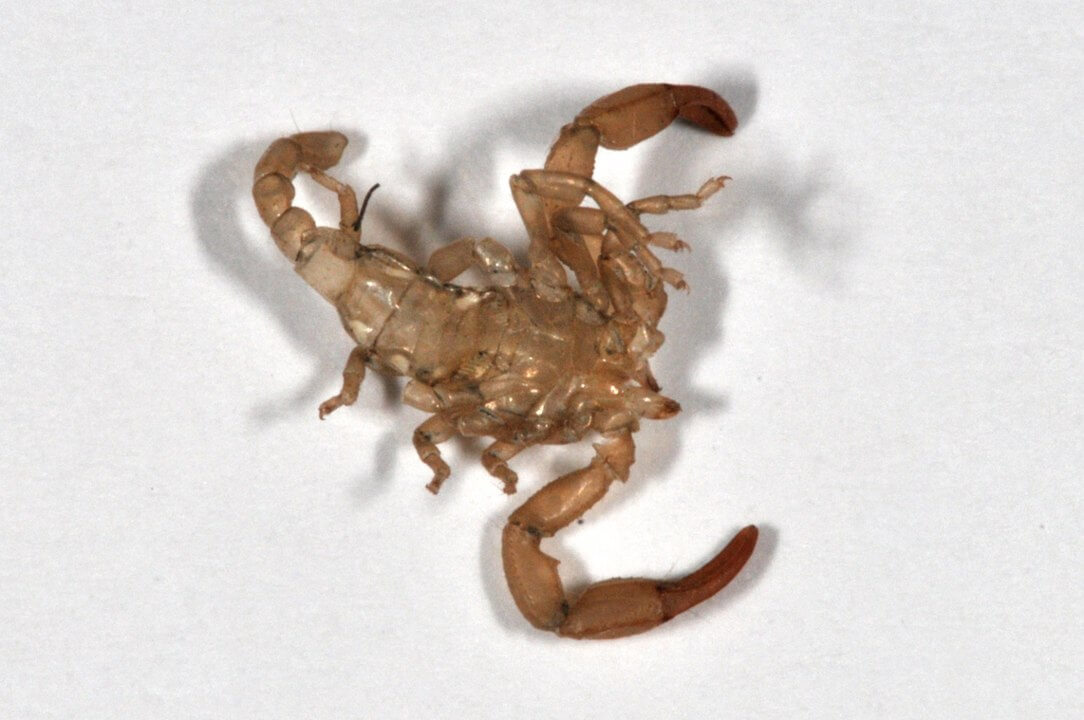 Photo credit: By Fritz Geller-Grimm - Vlastito djelo, CC BY-SA 3.0, https://commons.wikimedia.org/w/index.php?curid=9854317
Photo credit: By Fritz Geller-Grimm - Vlastito djelo, CC BY-SA 3.0, https://commons.wikimedia.org/w/index.php?curid=9854317
Few scorpion species are found in Croatia but the two most common species are the Euroscorpius Italicus and E. Germanus both of which are relatively harmless. Scorpions do not pose a serious threat to humans, however, a scorpion's venom may cause swelling, redness and itching around the area. The person may also experience severe pain, allergic reactions, tingling and numbness. These arachnids are mostly found in coastal, rather than continental, regions of Croatia. If stung by a scorpion, it is best to apply a cool compress on the affected area and a pain relief medication if needed. To be safe, have the bite checked by a medical professional, especially if it is on a child. Take note: scorpions are protected species in Croatia so do not kill them if you spot one!
Ticks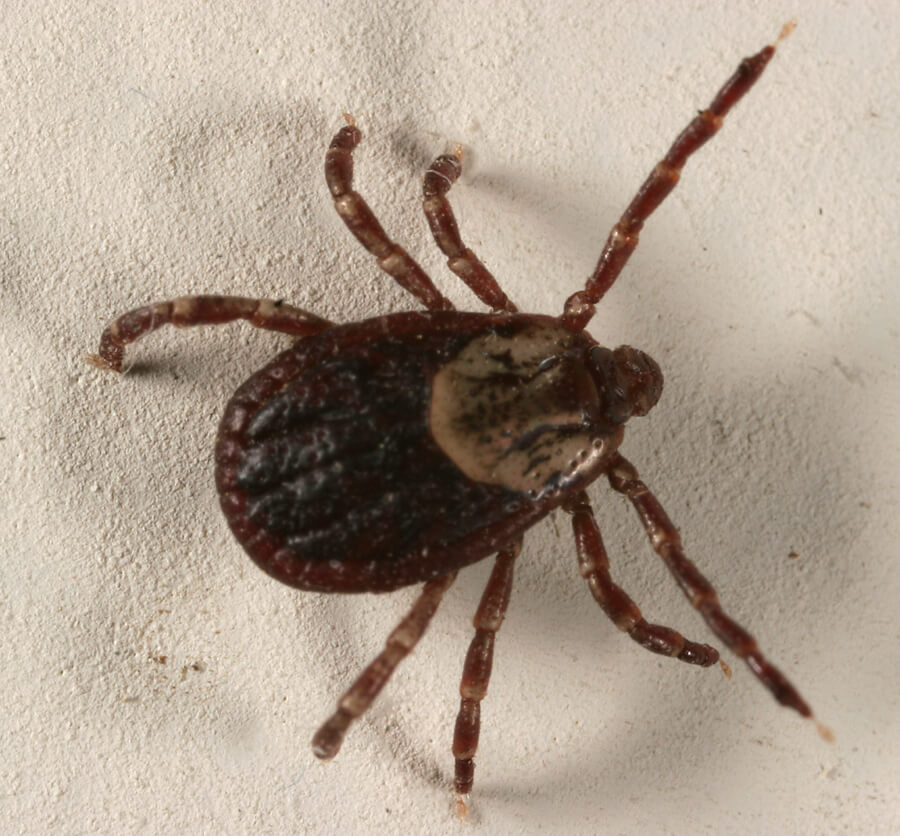 Photo credit: By André Karwath aka Aka - Own work, CC BY-SA 2.5, https://commons.wikimedia.org/w/index.php?curid=131004
Photo credit: By André Karwath aka Aka - Own work, CC BY-SA 2.5, https://commons.wikimedia.org/w/index.php?curid=131004
Ticks love wooded and grassy areas, as well as humid and warm environment - therefore, ticks can be found almost anywhere during spring and summer in Croatia. Most ticks in southern region of Croatia do not carry tick-borne illnesses. The ones who may transmit or cause infections such as Lyme disease, encephalitis and tick paralysis are active in May and June and are mostly found in forested regions of continental Croatia. To avoid getting bitten by these blood-sucking insects, it is best to wear full-length clothing and insect repellent especially during outdoor trips. If bitten and a tick is attached to your skin, grasp the tick as close to the skin's surface as possible and pull it upward steadily using fine-tipped tweezers to safely remove the tick. Make sure not to leave any parts of the tick in your skin and clean the bite area, as well as your hands, with soap and water and rubbing alcohol. Remember to never crush a tick with your bare hands as it may transmit diseases. It is best to dispose a live tick in alcohol solution, place it in sealed container or flushing it down the toilet.
Sharks Photo credit: By 出羽雀台 - Own work, CC BY-SA 4.0, https://commons.wikimedia.org/w/index.php?curid=107209573
Photo credit: By 出羽雀台 - Own work, CC BY-SA 4.0, https://commons.wikimedia.org/w/index.php?curid=107209573
With rich marine biodiversity, numerous species of sharks are found in the Adriatic waters with only two species - Mako and Great White sharks - are deemed dangerous to humans. According to Shark Attack Data, since the 1900s, there have been 11 reported fatal shark attacks in Croatia - the latest of which took place in 1974 in Omiš. The last recorded non-fatal shark attack was in 2008 near Vis Island. Nonetheless, the attacks in the Adriatic sea are extremely rare so it is still very safe for swimmers, surfers and divers.
The best way to avoid a shark attack is to take extra precautions when going to the sea. For starters, avoid swimming too far away from the coastline and do not wear bright jewellery because sharks might confuse it for a glistening fish, a.k.a, shark food. If a shark happens to be nearby, try not to panic and swim away vertically without making too much movements and noise. If a shark ends up attacking you and you are not alone, it is best to stay in a defensive position (back-to-back) to avoid surprise lunges from sharks. It is impossible to outswim a shark so your best bet is to make the shark see you as a strong and credible threat by throwing a jab at the shark's most vulnerable areas - gills, eyes and snout. Targeting these areas can cause the shark to retreat. Sharks rarely attack but when they do, it can be severely dangerous, even fatal; so the surest way to prevent shark-related incidence is to steer clear from shark-infested areas.
Sea Urchins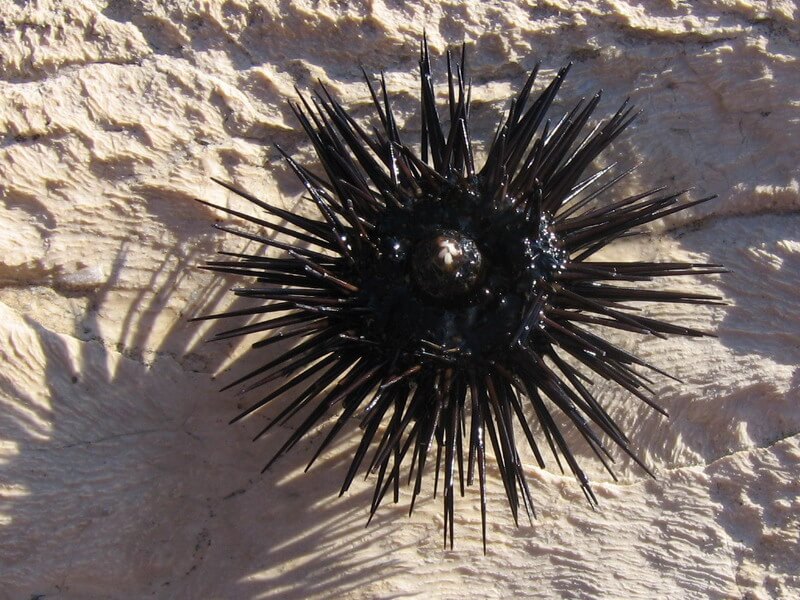 Photo credit: By Lacen - Croatia, Public Domain, https://commons.wikimedia.org/w/index.php?curid=248760
Photo credit: By Lacen - Croatia, Public Domain, https://commons.wikimedia.org/w/index.php?curid=248760
The presence of sea urchins is a sign of clean and unpolluted water, hence, it's no wonder that these spiky creatures are ubiquitous on the Adriatic Coast. Every tourist season, the public beaches in Croatia are often cleaned of sea urchins so most of them are found in secluded and natural beaches near the shores and around the rocks. Sea urchins are not poisonous but stepping on their spikes cause painful foot injury which can make the rest of your trip irritating and uncomfortable. Their spikes break easily and worse, they get stuck under the skin. The best way to prevent a sea urchin injury is to wear a pair of protective water shoes (warning: may trigger strong disapproval look from locals). If you accidentally stepped on a sea urchin, use tweezers to remove any spikes, although some will be too deep to be taken out. Afterwards, clean the affected area with soap and water but remember to leave it open and unbandaged. Use pain relievers if needed.
Jellyfish & Sea Anemone Photo credit: By Mark Ahsmann - Own work, CC BY-SA 3.0, https://commons.wikimedia.org/w/index.php?curid=30241025
Photo credit: By Mark Ahsmann - Own work, CC BY-SA 3.0, https://commons.wikimedia.org/w/index.php?curid=30241025
Jellyfish are gelatinous sea creatures mostly made up of water, thus, they do not have good movement control. These creatures mostly float and are carried by sea currents so their presence is detected from time to time in the Adriatic sea. Unfortunately, when jellyfish end up in Adriatic coast, they come in huge numbers so jellyfish related injuries go up as well. However, most of the stinging incidents occur when a human accidentally brushes across a jellyfish while swimming. The jellyfish that are found in the Adriatic sea come from cnidarian family of which contain a number of species that are poisonous. The long tentacles of jellyfish are able to pierce through human tissue where their poison is transferred. Sea anemones are also found in the Adriatic shores, especially, the cylinder anemone. This type of anemone is often found in shallow waters and unlike jellyfish, sea anemones are sedentary and are attached to seabeds and rocks where humans can easily step on them.
A jellyfish and anemone sting may cause searing pain or severe burning sensation in the affected area and redness and rashes may also appear. Sometimes, the area swells and gets blistered, too. Some people have been reported to develop severe symptoms including eczema, violent itching, and darkened skin pigmentation. In very rare cases, jellyfish venom can lead to anaphylactic shock causing serious health risks. Depending on the severity of the situation, the first aid for a jellyfish sting is to wash it with salt water (freshwater can intensify the pain), and wash the injured area with vinegar or alcohol because these can block the poison from releasing further. There are also medications that reduce swelling and itching but the best treatment option is to get the injured area checked by a medical professional.
Important note: Dead jellyfish can still sting so never touch one with bare hands!
Weever Fish 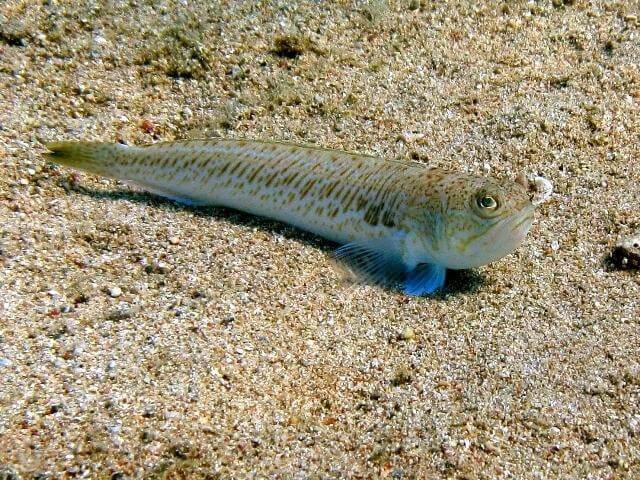 Photo credit: By Roberto Pillon - http://www.fishbase.de/photos/thumbnailssummary.php?ID=1363#, CC BY 3.0, https://commons.wikimedia.org/w/index.php?curid=25931842
Photo credit: By Roberto Pillon - http://www.fishbase.de/photos/thumbnailssummary.php?ID=1363#, CC BY 3.0, https://commons.wikimedia.org/w/index.php?curid=25931842
The greater weever, locally known as pauk, is the most commonly found weever fish in the Adriatic sea. Other species from this family include starry weever, lesser weever and spotted weever, all of which are very rarely found since they prefer deeper areas and only approach the shores during mating season in winter. The greater weever poses the biggest hazard to humans because they often swim in shallow waters. The weevers have spikes on their gills and dorsal fins where their poison is located. Most incidents including greater weevers happen due to fishermen's carelessness and lack of knowledge or when a swimmer steps on the fish accidentally in the shallow waters. The venom of weever fish brings unbearable pain within 15 to 30 minutes of contact and swelling. The most common reactions to weever venom include loss of consciousness, nausea, loss of sensation in the affected area, elevated heart rate and breathing difficulties. The first aid for weever fish poisoning starts with removing the remaining spikes and disinfecting the area with clean water and soap. Afterwards, soak the area at the highest temperature one can endure for at least half an hour while being careful not to cause burns on the skin. Poison from weever fish is believed to be volatile in heat so this step is highly advisable to delay the spread of the poison until medical help arrives.
In general, the diverse and beautiful Croatian wildlife is very safe as long as you keep proper distance and safety measures from the wild animals. It is highly unlikely for you to come across these wildlife dangers, except maybe for sea urchins, but it is always best to stay alert and observe necessary precautions when travelling in unfamiliar places. Get acquainted with the list of numbers and responders in Croatia you may need to contact in case of emergency. Have a safe travel and remember, watch where you step!
For more on travel, follow TCN's dedicated page.
For Croatia's best travel destinations and trips, follow Total Croatia.
CLICK HERE for more about Croatia.
Journalist Clickbait Victim: The Curious Case of Mystery Fish on Korčula
June 2, 2021 - When TC editor Iva Tatić caught the fish nobody could identify, TCN reporter Ivor Kruljac jumped to action in the hope he will find a marine life scoop. But after the dramatic realization that Atlantic lizardfish is nothing spectacular, he became a journalist clickbait victim. Meet the mystery fish on Korčula.
It was early evening between 7 pm-8 pm on the eastern Korčula coastline on May 28. After a long week of handling the Total Croatia site, TC editor Iva Tatić decided to chill and went fishing. Instead of managing the multilingual site that brings you the best tips on how to travel and enjoy Croatia, she must've been happy with the idea she can enjoy in Croatia herself, as she was preparing two hooks – one with a squid and the other with the piece of bread. Marine life must be very humble cause instead of a squid (absolutely delicious, either fried or grilled and stuffed with swiss chard), the bread was the taken bait for the careless fish soul underneath the Adriatic surface.
Iva took the opportunity and caught its prey, but pretty soon, happiness for the catch was additionally spiced with curiosity.

the source of curiosity and happiness © Iva Tatić
„What the hell is this?“ Iva asked the local Korčula fishermen showing them her catch.
And „no idea“ was the consensus by other marine life hunters.
„Locals call it the spider“, said a local fisherman known as Pero to Iva. „It looks like Spiderman“.
Iva didn't feel that Spiderman is an accurate comparison, and as no one really knew the answer, the whole thing went online.
After Iva shared the photos of its catch on Facebook, the online jury narrowed the mystery to two possible suspects: Saurida and Atlantic lizardfish.
Still being new and wanting to gain recognition in the newsroom, I took on myself to investigate what exactly is this Aquaman-Spiderman-love-child. Perhaps it's something invasive, a threat to the lovely Adriatic, and a fantastic journalist story.
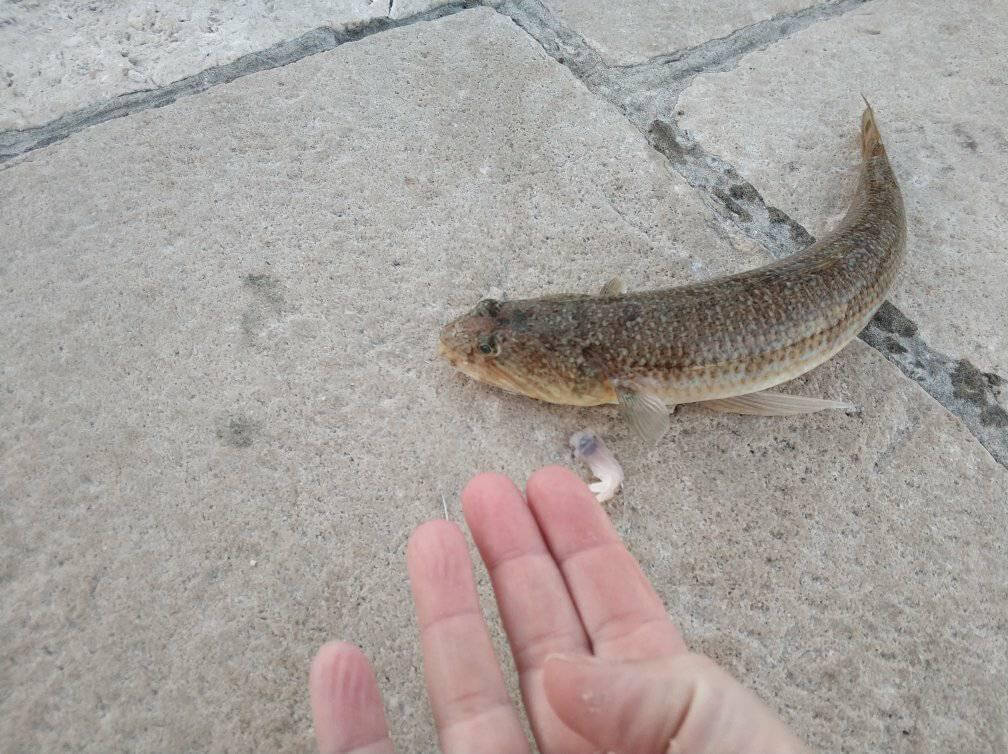
The case, the challenge, the scoop © Iva Tatić
Word on the expert street
A little bit of browsing through the pages of Rovinj Sea Research Centre (CIM), and a few calls, led me to the CIM Senior scientific associate, dr. Andrej Jaklin.
„It looks like Atlantic lizardfish, I saw that fish in person on Pelješac 15 years ago“, said Dr. Jaklin on the phone while looking at the images of the catch I sent him.
Jaklin's memory also seems fit with Pelješac being close to Korčula Island. Still, he said he can't really tell me too much about the fish and recommended it to me to contact dr. Marcelo Kovačić from the Natural History Museum Rijeka. However, dr. Kovačić, a curator for vertebrates, was on vacation, so the call was picked up by Milvana Arko-Pijevac, curator for marine invertebrates.
„I think this could be an Atlantic lizardfish, the head looks like it should, but I'm specialized for invertebrates, mollusks and shellfish“, said Silvana Arko-Pijevac.
So until that point, two experts for marine bio life are certain this is an Atlantic lizardfish (Synodus saurus). Fish, from Atlantic, I thought. Are we talking about an invasive species that manage to come to the northern dead-end of the Mediterranean all the way from the Atlantic? If so, is it hazardous to the domestic sea life of the Adriatic?
Despite recognizing the fish, neither Jaklin nor Arko-Pijevac couldn't say more details, but it's worth noting that the scientific community can once again serve as a role model to everyone who thinks they are experts on everything (both in Croatia but a trend we see spawn worldwide). Instead, my interlocutors accepted and pointed out the limits of their knowledge and suggested me someone who knows more.
Clickbait: It's not just for journalists anymore!
It took me a while to reach Dr. Jakov Dulčić from the Laboratory of Ichthyology and Coastal Fishery at the Institute of Oceanography and Fisheries in Split. First, he was not in the office, and later, he was at a meeting. But, with Arko-Pijevac's claim that Dulčić is the best ichthyologist in all of Croatia, it was worth the wait.
Finally, my mobile phone impulses from Zagreb caught dr. Dulčić in Split, and I excitedly asked him for help. To identify and say a bit more about the mysterious fish fishermen in Korčula failed to recognize, but is suspected to be the Atlantic lizardfish.
„I have to see the photos to say for certain“, said Dulčić.
„I already sent them to your e-mail before this call. Can you please refresh your E-mail?“, I asked with hearable excitement in my voice and suspense in my gut.
The suspense only grew as Dulčić was opening the e-mail.
„Found it!“, he said and I almost screamed out of excitement,
„Yes, indeed, that is the Atlantic lizardfish“, confirmed Dulčić with a relaxed voice while I was ready to ask tons of questions about this weird and possibly invasive species.
„But that is neither exciting nor anything special to catch in the Adriatic“, continued Dulčić with the same chilled tone.
I listened to that sentence with a blank expression fortunately, nobody has seen it except the walls in my apartment.
„You might think it's unusual in Croatian waters because of its name, but it's the normal fish that lives in Adriatic“, added Dulčić.
I couldn't help but think what a sour poetic justice. Being a journalist, a member of the profession in which some of my colleagues try to catch views by clickbait, to be hooked (pun intended) on a clickbait in scientific terminology.
„They can be found across the Adriatic sea, everywhere in Croatia. Their population used to be smaller in the previous years, but it recently got larger. It seems they have certain cycles, but it's nothing spectacular“, he concluded.
„But how come none of the fishermen recognized it?“, I asked puzzled.
„Interestingly enough, it is often caught, but it can rarely be seen on the fish market, and that's a place thanks to which you can usually recognize fish“, explained Dulčić.
However, informing and educating fishers and the general public about marine life in the Adriatic is something dr Dulčić and the Oceanographic Institute are very dedicated to.
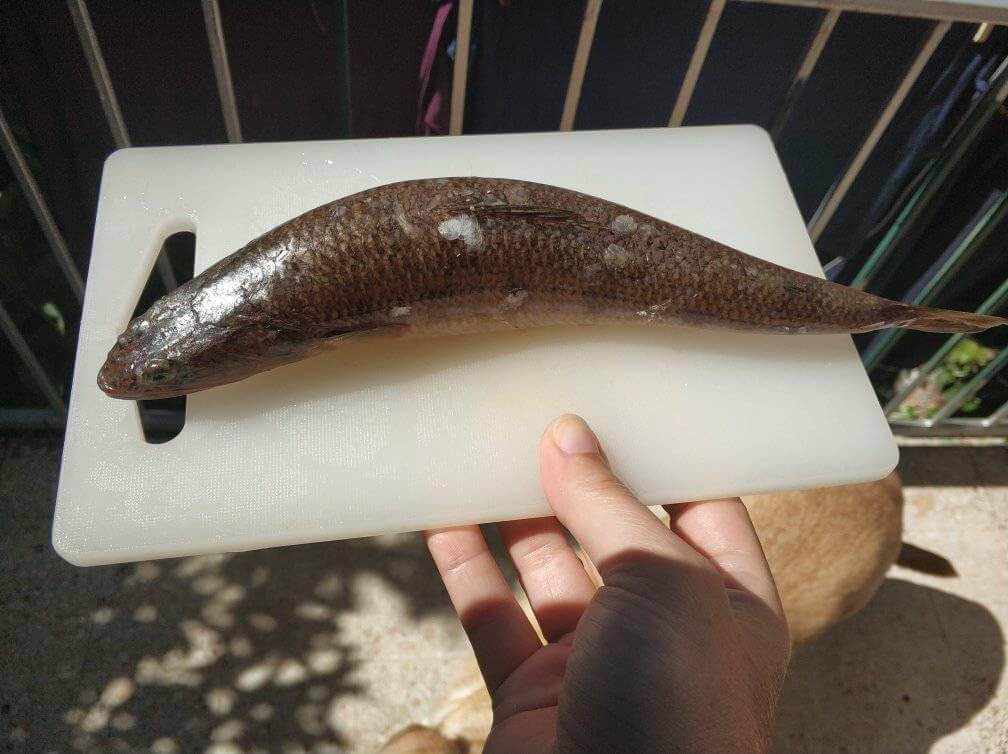
Presenting you the Atlantic lizardfish © Iva Tatić
This is evident by the LEKFishResCRO project.
„This project will address the need to improve knowledge on the trends in Adriatic fisheries with novel methods as well as to acknowledge recent changes in fish biodiversity in a complex Adriatic ecosystem. The central objective of the project will be to evaluate the potential use of the LEK in developing the knowledge base for fisheries management and conservation. The strategy employed for this evaluation will be a two-way discussion between fisherman and other stakeholders from one side and fisheries biologists from another side around the subject of what sorts of indicators of ecosystem health would make sense in light of both the LEK of the fishers and the research-based knowledge (RBK) of the fisheries biologists“, says LEKFishResCRO website, and with loads of materials, you can check yourself.
„We collaborate well with fishermen, we work on their education, and with their tips and images they sent from the field we quickly gather research data“, explained Dulčić.
The invasive species are legitimately a threat to Adriatic, and it comes from the Red Sea through Eastern Mediterranean, but these examples are excellent topics for some other articles.
In the meantime, the mystery fish is identified as a mainstream species in the Adriatic. Somewhat newsworthy (maybe?), but this time my ship returned without a scoop from the stormy cruise in the sea of information.
I sent a message to Iva explaining what she caught (which she already found out on her own, she is a good journalist after all), and I only confirmed that she can unfreeze it and eat it safely. Additionally, I found this recipe at least.
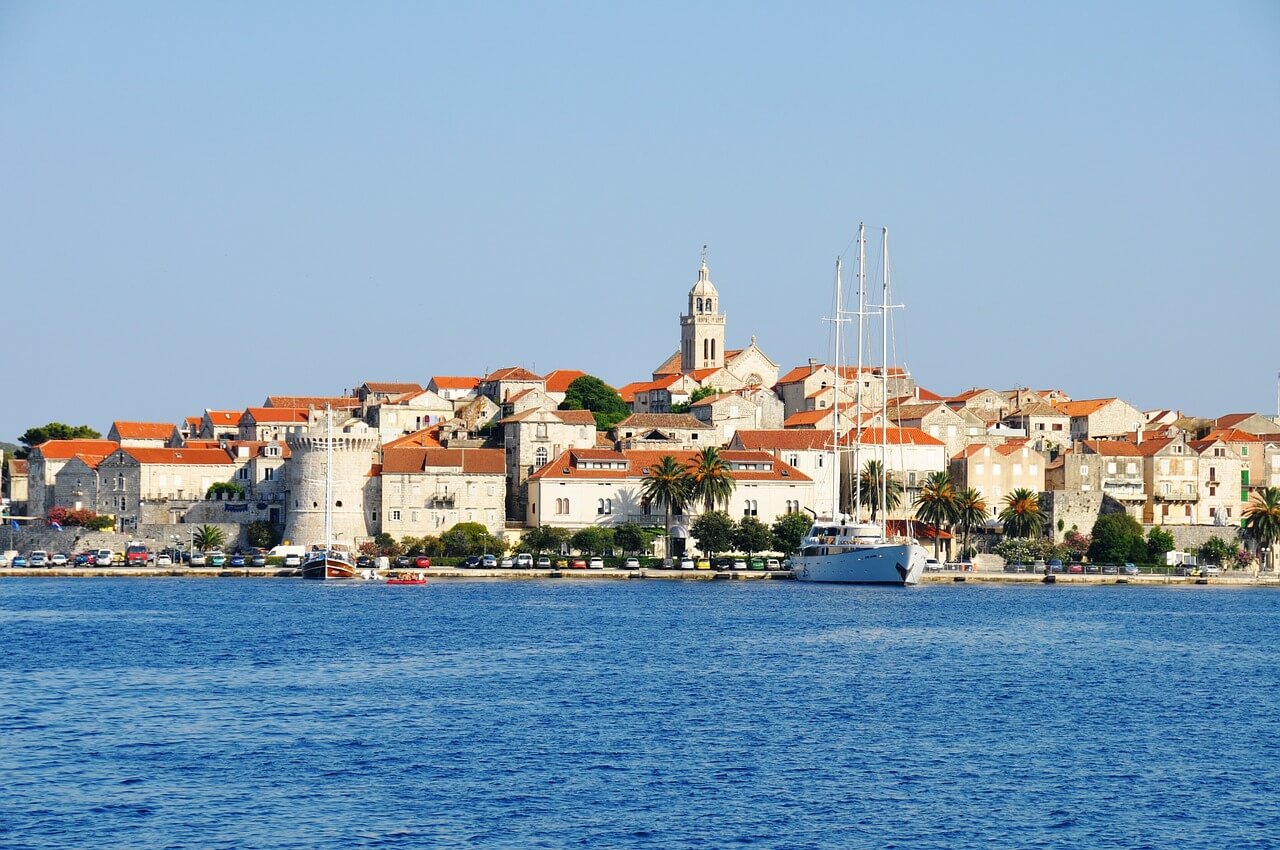
Korčula and Adriatic Sea, Pixabay
Enjoy the Adriatic, but respect marine life
In an attempt to conclude this investigative piece (let's pretend it is one, please) on a socially responsible and eco-friendly note, I asked dr Dulčić if there are any type of fish tourists and locals shouldn't fish because it's on the verge of extinction and if caught it should be returned to the sea immediately. „Such fish is living in areas and conditions where you can't catch it with hooks or nets. But Do not dive out noble pen shells (Pinna nobilis), or disturb mammals such as dolphins. And be careful around sharks and jellyfish“, concluded dr. Dulčić.
Learn more about Korčula on our TC page.
For more about science in Croatia, follow TCN's dedicated page.
Three Cute Croatian Sea Turtles Returned to Sea Following Recovery
As Morski writes on the 16th of June, 2019, Rafael, Tilago and Žal are the names of the three sea turtles that the Sea Turtle Recovery Centre staff released back into the sea on Friday, June the 14th, 2019. They were returned to their natural habitat on the beach beside the the Verudica lighthouse on the Verudela peninsula in Pula, Istria.
After the release of the aforementioned sea turtles back into the wild, Pula Aquarium organised the opening of the new Sea of sound (More zvukova) exhibition at the Verudela fortress. The exhibition is devoted to the various sounds produced by marine fauna and more. Since 2019 is marked as the International Year of Sound, this exhibition will accompany the theme with interesting interactive installations and fun educational material on the production of sound in the sea, as well as the noise pollution which interferes with the daily lives of many marine animals, RegionalExpress writes.
Žal is a sea turtle who arrived at the centre back in early May, where she was weighed, weighing 15kg, with a length of about 50cm. Her age was estimated at fifteen. She was found by some fishermen fishing at the southern end of Istria, who thought she might have been accidentally injured during the lifting of the net because she wasn't moving very well. When she arrived at the centre, she floated around for a short time and didn't want to eat independently. After just one week at the centre, she began to eat sardines and squid, after which she recovered very quickly.
Rafael is a smaller turtle who was at the centre for a while recovering from the amputation of his right front fin. He was found weak, injured and frightened stuck in an abandoned fishing net along the coast of the island of Korčula back in February 2018. He was transported to Split where a vet unfortunately had to amputate the damaged fin, and after a few days, he was brought to the Pula centre to recover from his ordeal. Rafael's recovery was a long one, he was weak, weighed only 1kg and had a shell of 25cm in length, he was estimated to be only two years old. Today Rafael weighs 3kg, his shell is 30cm long and he has finally gained enough weight and is fit enough to lead an independent life back in the Adriatic sea.
Tilago is a sea turtle who was found by the staff of Telašćica Nature Park, he weighs 30kg and his shell is 60cm in length. His estimated age is 20. He was delivered to the centre way back in February 2017 where significant damage to his shell, as well as curvature of the spine were established. It is possible that a boat propellor accidentally caused extensive injuries whuch healed themselves, but unfortunately incorrectly filled the inside of his shell with air from his lungs. For this reason, it was much more difficult for Tilago to properly control his back fins and swim normally. Despite his woes, Tilago managed to regain his swiftness and proper movement by resting and spending his winter recovering at Pula Aquarium's large and safe swimming pool, and he's now ready to return to life at sea.
Make sure to follow our dedicated lifestyle page for much more.


